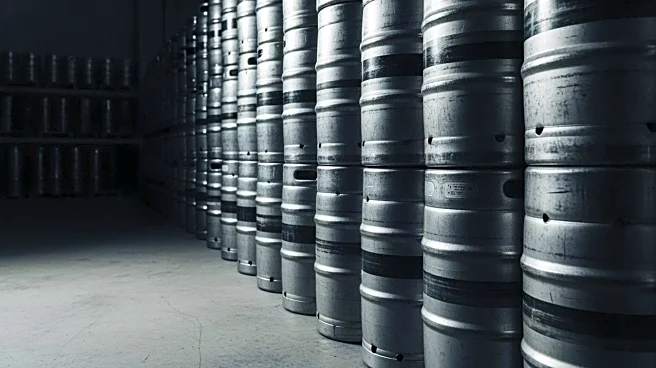What's Happening?
Molson Coors Beverage Company has announced plans to cut approximately 400 jobs, representing 9% of its Americas salaried workforce, by the end of the year. This decision is part of a broader corporate
restructuring strategy aimed at addressing challenges faced by the U.S. alcohol industry, including cautious consumer spending and tariff-driven volatilities. The company intends to reinvest in its core categories, such as beers, non-alcohol beverages, and energy drinks. Molson Coors anticipates incurring charges between $35 million and $50 million related to the restructuring in the fourth quarter. The company, which operates breweries in Colorado and owns brands like Coors, Molson, and Miller, had a global workforce of 16,800 employees as of December 2024.
Why It's Important?
The workforce reduction at Molson Coors highlights the ongoing challenges within the U.S. alcohol industry, particularly in the face of economic pressures such as inflation and tariffs. By restructuring, Molson Coors aims to streamline operations and focus on its most profitable segments, potentially enhancing its competitive position in the market. The job cuts may impact local economies where the company operates, affecting both employees and communities reliant on these jobs. Additionally, the restructuring could influence investor confidence, as evidenced by the company's stock performance following the announcement.
What's Next?
Molson Coors is expected to complete the workforce reduction by the end of December, with the restructuring charges impacting its financial results in the fourth quarter. The company will likely focus on optimizing its product offerings and operational efficiency to navigate the current economic landscape. Stakeholders, including employees, investors, and industry analysts, will be closely monitoring the company's performance and strategic direction under the leadership of its new CEO, Rahul Goyal.
Beyond the Headlines
The restructuring at Molson Coors may signal broader industry trends, as other alcohol companies could face similar pressures and consider similar strategies. The focus on core product categories suggests a shift towards prioritizing profitability and market share in a competitive environment. This development may also prompt discussions on the long-term sustainability of the alcohol industry amid changing consumer preferences and economic conditions.












